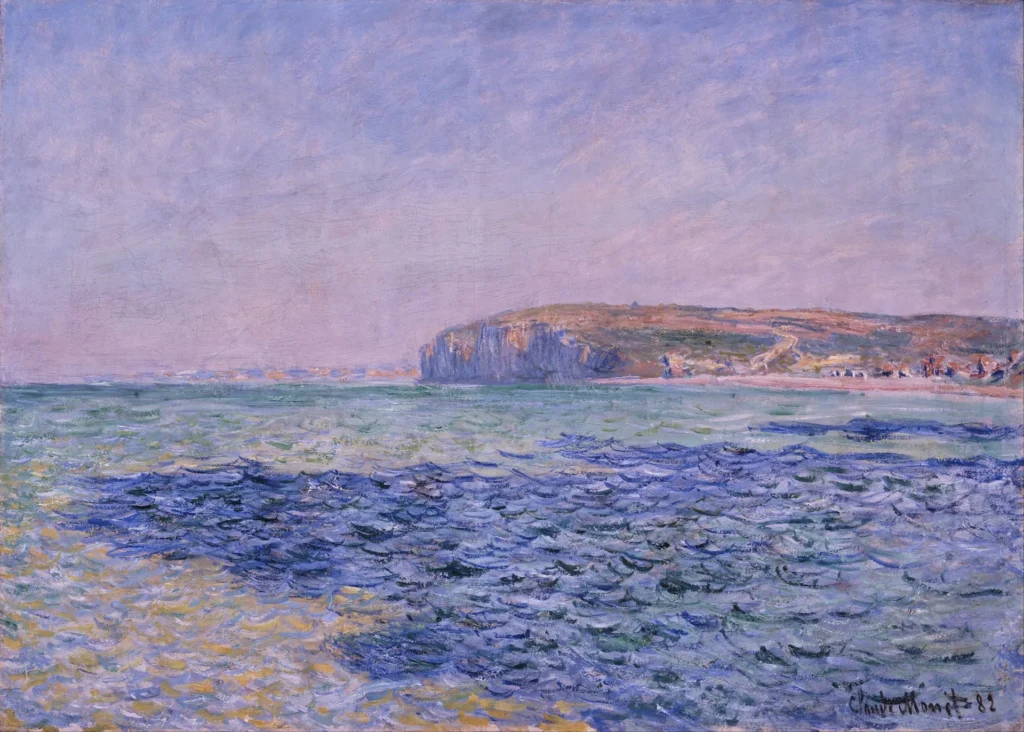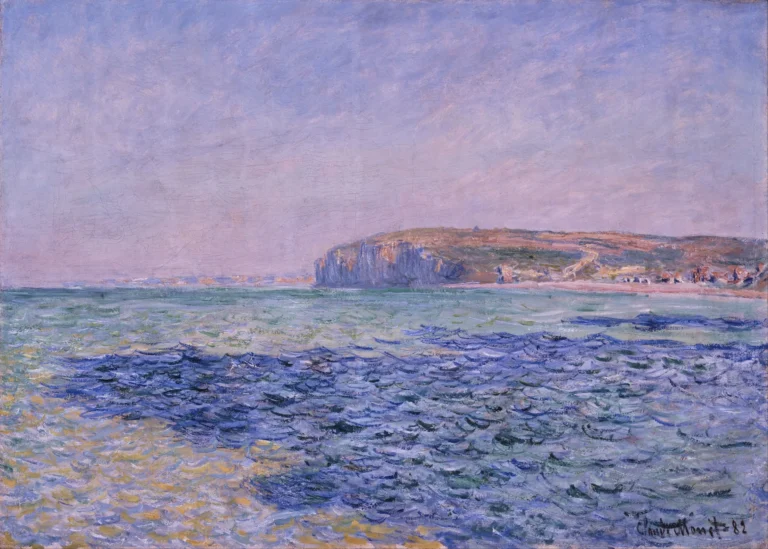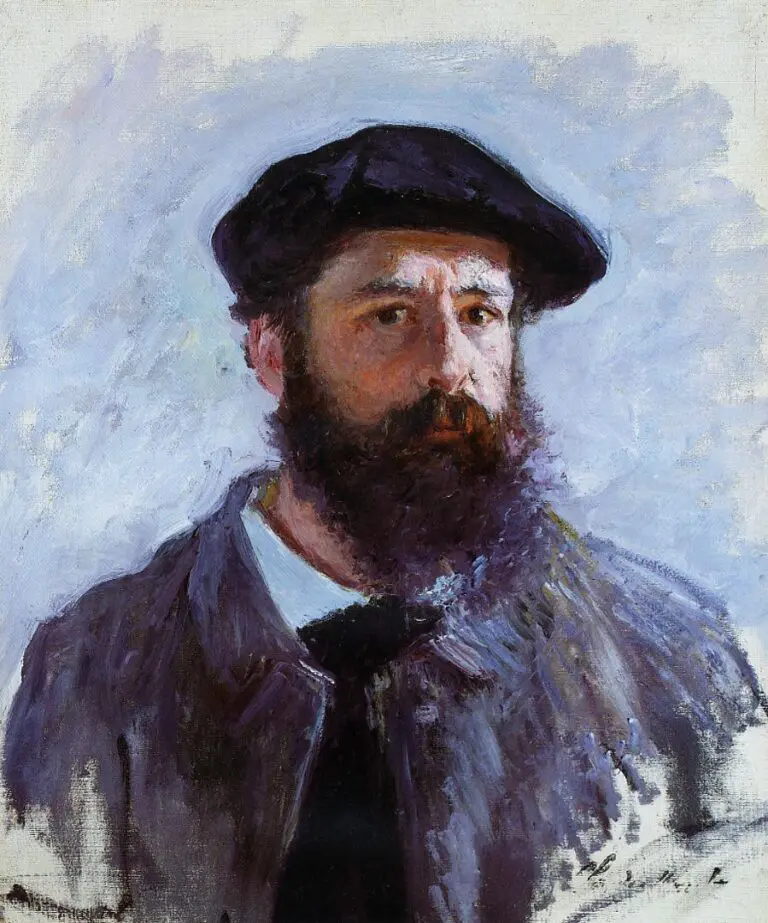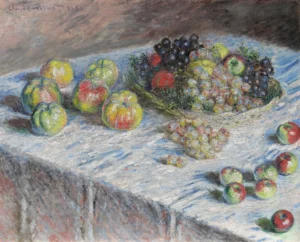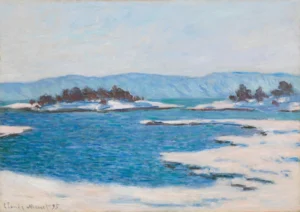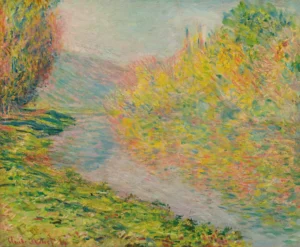Shadows on the Sea. The Cliffs at Pourville (1882)
Created in 1882, Shadows on the Sea. The Cliffs at Pourville is an enchanting oil painting by Claude Monet that perfectly captures the ephemeral beauty of the sea. Through short, curved brushstrokes, Monet transforms the canvas into a lively depiction of shadows and reflections on water, evoking the movement and warmth of a summer day. The painting stands out for its vibrant colors and compositional harmony, embodying the essence of Impressionism.
1882
About the Artwork
The painting emerged during Monet's stay in Pourville, a small coastal town in France, where he was inspired by the changing qualities of light and the serene beauty of the ocean. It was during this period in the 1880s that Monet and fellow Impressionists began to explore new ways of capturing nature's essence on canvas. 'Shadows on the Sea' is unique for its focus on water's reflective properties, signaling Monet’s growing versatility and his dedication to representing nature's shifting moods. His innovative use of color and form paved the way for future generations of artists, making this piece an important chapter in the history of Impressionism.
Did You Know
Claude Monet was known for his obsessive fascination with the effects of light. This painting embodies his relentless pursuit of capturing the transient moment, a hallmark of Impressionism.
Monet painted several works during his time in Pourville, capturing its scenery and light variations. This coastal area greatly influenced his artistic development during the late 19th century.
‘Shadows on the Sea’ is in the public domain, allowing wide accessibility to its inspiring visual history, yet its variations in reproductions may present complex copyright issues.




